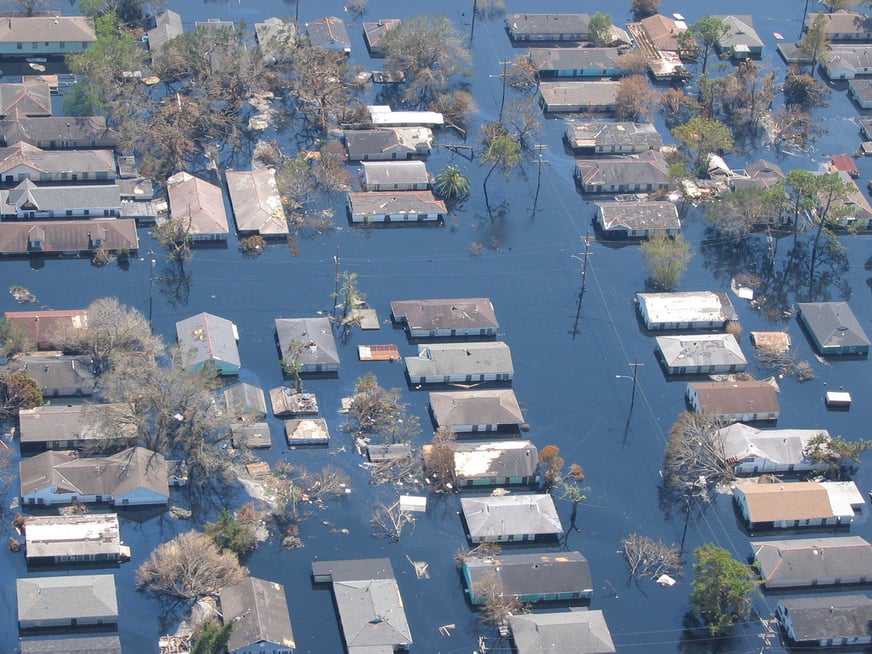Aside from inflicting devastating natural disasters on often vulnerable communities, climate change can also spur outbreaks of infectious diseases like Zika , malaria and dengue fever, according to a new study by researchers at the University of Colorado Anschutz Medical Campus.
“Climate change presents complex and wide-reaching threats to human health,” said Cecilia Sorensen, MD, lead author of the study and the Living Closer Foundation Fellow in Climate and Health Policy at CU Anschutz. “It can amplify and unmask ecological and socio-political weaknesses and increase the risk of adverse health outcomes in socially vulnerable regions.”
When natural disasters strike such places, she said, the climatic conditions may make the public health crisis significantly worse.
 Dr. Cecilia Sorensen, lead author of the study and the Living Closer Foundation Fellow in Climate and Health Policy at CU Anschutz.
Dr. Cecilia Sorensen, lead author of the study and the Living Closer Foundation Fellow in Climate and Health Policy at CU Anschutz.
The researchers said these vulnerabilities can happen anywhere. After Hurricane Katrina hit New Orleans, cases of West Nile disease doubled the next year. Climate change in Africa appears to be increasing cases of malaria. And the recent destruction in Houston, Florida and Puerto Rico due to hurricanes may usher in more infectious diseases in the years ahead.
The study focused specifically on a magnitude 7.7 earthquake that struck coastal Ecuador in April 2016, coinciding with an exceptionally strong El Niño event. El Niños are associated with heavy rainfall and warmer air temperatures. They are also linked to outbreaks of dengue fever.
Sorensen, a clinical instructor in emergency medicine at CU Anschutz, was in Ecuador with her co-authors working with the Walking Palms Global Initiative. They were operating a mobile health clinic after the disaster.
“We were seeing all of these viral symptoms in the wake of the quake,” she said. “We noticed a huge spike in Zika cases where the earthquake occurred. Prior to this, there were only a handful of Zika cases in the whole country.”
In fact, the researchers found the number of Zika cases had increased 12-fold in the quake zone.
Zika virus is transmitted by mosquitos. Symptoms are usually mild but the infection can cause major abnormalities and even death in a developing fetus.
Warmer temperatures and increased rainfall from the El Niño, along with a devastated infrastructure and an influx of people into larger cities, likely caused the spike in Zika cases, Sorensen said.
“We saw so many people affected by the earthquake that were sleeping outside without any shelter from mosquitoes, so we were worrying that the region’s changing climate could facilitate the spread of diseases,” she said. “Natural disasters can create a niche for emerging diseases to come out and affect more people.”
Sorensen’s team reviewed the existing research on the link between short-term climate changes and disease transmission. They applied those findings to explain the role of the earthquake and El Niño in the Zika outbreak.
They suggest El Niño created ideal conditions for Zika-carrying mosquitos to breed and make more copies of the Zika virus. The warmer temperatures and increased rainfall from El Niño have previously been associated with a higher likelihood of dengue outbreaks. Warmer temperatures can also accelerate viral replication in mosquitoes and influence mosquitos’ development and breeding habits.
At the same time, the El Niño event brought warmer sea-surface temperatures, which have been shown to correlate with outbreaks of mosquito-transmitted diseases. Estimates from remote sensing data in coastal Ecuador show that sea-surface temperatures were higher than average from 2014-2016.
The team also believes an increase in water scarcity after the earthquake indirectly benefited mosquito development. The quake damaged municipal water systems, forcing people to store water in open containers outside their homes. These served as additional habitats for mosquito larvae.
The new findings could be used by governments to identify and protect vulnerable communities before natural disasters happen, Sorensen said.
“One idea is to develop disease models that can use existing climate models to predict where these vectors will show up due to climate variability,” she said. “Applying these new models to areas that have pre-existing social vulnerabilities could identify susceptible regions, allowing us to direct healthcare resources there ahead of time.”
The study was published October 12 in GeoHealth, a publication of the American Geophysical Union.
The co-authors of the study from CU Anschutz include Emilie Calvello-Hynes, MD, assistant professor of emergency medicine and Jay Lemery, MD, associate professor of emergency medicine and chief of wilderness and environmental medicine.
The other co-authors include: Mercy J. Borbor-Cordova, Faculty of Naval Engineering, Oceanic Sciences and Natural Resources, Escuela Superior Politecnica del Litoral, Guayaquil, Ecuador; Avriel Diaz, Dept. of Evolution, Ecology and Environmental Biology, Columbia University; Anna M. Stewart-Ibarra, Department of Public Health and Preventative Medicine, SUNY Upstate Medical University, Syracuse, NY.
This paper is a collaboration of the University of Colorado Consortium for Climate Change and Health.

